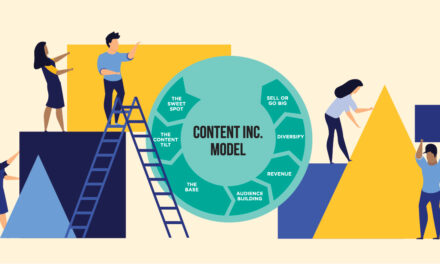Rapt Media released a report questioning whether personalization in content creation is being approached in the right way. The Future of Content: Personalizing the Content Experience, suggests that marketers are relying too much on distribution technology and “push” marketing rather than leveraging emerging content creation technologies that could help them customize content at the point of creation. As Rapt Media CEO Erika Trautman explains: “Personalization has to be prioritized from the moment content is created. It must be created with the ability for consumers to navigate, explore and customize it to their personal preferences and interests.” And, in addition, it needs to close the feedback loop by providing marketers with data and analytics indicating how consumers have engaged with the content.
Those surveyed shared perspectives on some of the challenges they’re currently facing:
- 84% say developing content that’s personalized enough is their biggest challenge
- 94% say better content tech is key to creating content that’s personalized and engaging
- Most say their companies are investing in content distribution and management tech
Many marketers take a one-size-fits-all content approach, and believe they’re making that content personalized by distributing it to the right channel at the right time, says Trautman. Personalization in this sense, she says, is around not only serving up the right content at the right time through the right channels, but also allowing users to create their own experiences.
“What hasn’t happened though, yet, is there’s been no attention paid to whether or not the content itself is effectively creating personalized experience for consumers,” she says. “Does the consumer find the content that you’ve hand delivered to them to be a relevant personal experience? There’s a lot of evidence that we’re falling really short there.” And, she adds: “We haven’t yet had technology that enables us to gain insight into whether or not the content we’re creating is, indeed, creating a personal experience that’s relevant for the end viewer.”
Where content technology is going, she says, and where content marketers need to invest more heavily is in technologies that “provide feedback around the efficacy of this personalized content-what makes that possible is interaction.” In Rapt Media’s case that interaction takes place through viewing videos. But the same concept is relevant, for example, in terms of how users might navigate through a web site and what marketers’ analytics programs are telling them about these interactions.
In many respects, adds Jennifer Burak, VP of marketing with Rapt Media, what’s needed from a personalization standpoint is a shift from push marketing to pull marketing. “When you think about online behavior and where it’s going in terms of more of a lean-in, discovery mode, we see that with the rejection of push advertising. People want to be in control. They want to choose. They want to discover.” This type of discovery doesn’t take place with an ad, she says. “People don’t discover an ad. They don’t peruse an ad.” They do, though, discover and peruse websites-and videos. And when they do, they create personalized experiences that can be analyzed to help content marketers determine how to most effectively serve up content that engages their audiences.
“What we’re saying is you don’t create 10 different versions of your website,” says Trautman. “You create an experience that allows viewers to self-navigate and find content that’s relevant to them.” These interactions, she says, “will create deeper connections with the brand and you’ll get much deeper insights back-it’s shifting from this push mentality to a more immersive, two-way conversation that’s a really push-focused marketing strategy.”
Ultimately, those interactions, should result in some desired outcome. “We call them nodes,” says Trautman. “The value comes from people that are interacting with the content-we can see where they interact, where they stop and if they don’t get to the end node. If people don’t make it to the end node we’re able to send more personalized communication to them to get them to that end.” That’s personalization that matters.






